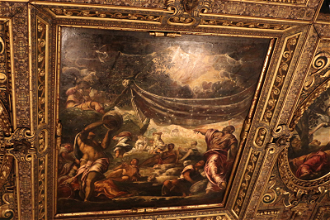Today's Gospel in Art - Leave the fig tree one more year

Common Fig, Giorgio Gallesio (1772-1839) © New York Public Library
Gospel of 26th October 2019 - Luke 13: 1-9
Some people arrived and told Jesus about the Galileans whose blood Pilate had mingled with that of their sacrifices. At this he said to them, 'Do you suppose these Galileans who suffered like that were greater sinners than any other Galileans? They were not, I tell you. No; but unless you repent you will all perish as they did. Or those eighteen on whom the tower at Siloam fell and killed them? Do you suppose that they were more guilty than all the other people living in Jerusalem? They were not, I tell you. No; but unless you repent you will all perish as they did.'
He told this parable: 'A man had a fig tree planted in his vineyard, and he came looking for fruit on it but found none. He said to the man who looked after the vineyard, "Look here, for three years now I have been coming to look for fruit on this fig tree and finding none. Cut it down: why should it be taking up the ground?" "Sir," the man replied "leave it one more year and give me time to dig round it and manure it: it may bear fruit next year; if not, then you can cut it down."'
Reflection on the Botanical Print
There are about 850 varieties of Ficus, generally referred to as fig trees. One of the greatest sources of artworks relating to plants, trees and flowers is in Botanical art. In Botanical illustrations, the emphasis is in recording almost scientifically the botanical accuracy to identify the various species of plants. Typically, the illustration will try to convey all the crucial aspects of the plant, including the leaves, fruits, flowers, life cycle, etc that enables accurate identification. It frequently includes relevant dissections for species identification, such as is the case here where we see the branch, the leaves, the fruit closed, fruit opened etc… It is a beautiful art form celebrating nature and Creation. The earliest surviving illustrated botanical work is the Codex Vindobonensis, made in the year 512AD for Juliana Anicia, daughter of the former Western Roman Emperor Olybrius....
To read on see: www.christianart.today/daily-gospel-reading/215


















